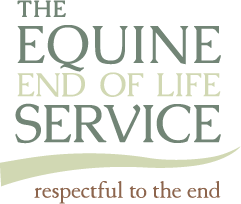Fallen Stock Guidelines in the event of severe weather and natural disasters
Q1: What is the Government position on disposal of fallen stock through burial in severe weather and other natural disasters?
The disposal of animal carcases is governed by EU animal by-products (ABP) legislation. Local authorities are responsible for the enforcement of animal by-products legislation in GB. There are also requirements on safe burial enforced by the Environment Agency. The Government has obligations under EU law to ensure the safe disposal of fallen stock to safeguard both public and animal health which normally means disposal by rendering or incineration. However, under ABP legislation, Government does have limited powers to authorise on-farm burial under certain circumstances. There is a permanent Government authorisation which permits the disposal of animal carcases by burial, burning or other means where access is difficult due to geography, climate or natural disaster.. A link to this can be found at:
-see authorisation C4 Normally, this authorisation would only be expected to apply in individual circumstances where it is difficult to collect a carcase for disposal by rendering or incineration e.g. where an animal falls down a ravine and cannot be retrieved for collection and disposal. However, in extreme circumstances such as the severe weather in parts of UK in Spring 2013 the Government may decide that it has a more general application in affected areas. In these circumstances Defra will make an announcement about how and where the authorisation is to be applied. The preferred means of disposal would normally expected to be burial and this document provides guidance on how it can be done safely and in these circumstances local authorities will be asked to suspend their normal enforcement of the regulations accordingly.
Q2: What can farmers legally do in these circumstances?
During periods of extreme weather or other natural disasters, farmers should continue to do everything that they can to facilitate the removal of carcasses from their farm and should contact their fallen stock collector in the normal way, unless: • their farm is in an affected area and; • it is not possible for the farmer to temporarily store the carcasses safely prior to later collection once conditions improve; and • it is not possible for the collector to access the farm to collect any carcasses which the farmer has been able to retrieve; If all the above circumstances apply it may be possible to bury fallen stock on farm, subject to you also meeting the conditions specified by Defra and the Environment Agency as outlined within this note. You may be committing an offence if you fail to comply with these conditions.
Q3: Can I deliver in my own fallen stock to my local collector?
If your local collector is busy in these exceptional circumstances and you can collect your own fallen stock and have a suitable covered leakproof vehicle to use to deliver these to your local collector you may do so under the regulations. However, you should first check that your collector is willing to take such deliveries before you do so.
Q4: How will I know if I can bury on-site?
You should check on the Defra website, with your local authority or contact your local Animal Health Office - details at the attached link:
http://www.defra.gov.uk/ahvla-en/about-us/contact-us/field-services/
You must also check that you can comply with the conditions set out in this note.
Q5: What other criteria must I meet which will permit me to bury my fallen stock on-site and who should I contact for advice on how to do this safely?
The Environment Agency has said that all burials (even those of individual animals) must comply with the following conditions:
1) For all burials less than two tonnes there is no requirement for an Environmental Permit or for you to contact the Environment Agency provided you have complied with conditions 3 to 11 set out below.
2) All burials that are between 2 - 8 tonnes must be referred to the Environment Agency as an Environmental Permit may be required. Conditions 4 to 11, set out below, will apply as a minimum. All fallen stock burials over 8 tonnes will require an Environmental Permit. Environmental Permits are chargeable and involve completing paperwork, therefore we suggest that farmers wherever possible avoid undertaking burials over two tonnes. Large burials present greater risks to the environment and human health, which is why they need an Environmental Permit.
3) For all burials less than two tonnes, additional burials of up to two tonnes may be made in the same year without a permit provided no two burials are within 500 metres of one another on any given farm unit.
4) Burial sites must not be located in areas subject to surface flooding. Refer to the Environment Agency’s flood risk maps but also take account of any known localised potential for flooding.
5) Burial sites must not be located within 50 metres of any identified swallow hole or any well, spring or borehole, irrespective of its current use as carcasses may contaminate water.
6) Burial sites must be at least 250 metres away from any well, borehole or spring where the water is used for human consumption. Contact your local authority to find out the locations of private drinking water supplies. Burial should not occur within any designated groundwater Source Protection Zone 1 (or 250 metres, whichever is greater). Source Protection Zones protect public drinking water supplies and they can be viewed on the ‘What’s in your backyard’ website by clicking here. If carcasses pose a risk of transmitting disease into groundwater this should be extended to Source Protection Zone 2 (or 250 metres, whichever is greater). These precautions are needed as carcasses may contaminate drinking water causing human health problems.
7) Burial sites must not be located on aquifers where there is less than 1 metre of unsaturated* zone below the proposed base of the burial pit. This must be verified by trial excavation before disposal takes place. Where not found to be the case, an alternative site location must be sought. *i.e. the expected highest water table must be 1 metre below the base of the pit. (For practical purposes this may mean that a safety factor is required especially where disposal is taking place in summer or in drought conditions. Depending on the depth of the burial this may mean that a minimum 5 metres of unsaturated soil must be present below the natural pre-existing ground surface. Soils must be dry when dug and free from any inflows other than very minor, localised weeps or seepages).
8) Burial sites must be at least 30 metres away from any watercourse and at least 10 metres from any field drain. Any identified drains should be removed or permanently sealed.
9) Burial sites should not be located directly on (that is, not in contact with) fissured and/or high permeability strata. In some cases it may be appropriate to consider partial land-raise by placement of a suitable subsoil. If you are unsure of the strata beneath your land please either use the geology viewer on the British Geological Survey website or phone the Environment Agency.
10) Only carcasses and natural excavated soil for backfill should be buried in disposal pits.
11) For burials below two tonnes the Environment Agency does not require any records to be collected or submitted providing you have complied with conditions 3 to 10. However, you may find it helpful to record the location of the burial for future reference. For burials over two tonnes a detailed record of the burial site location, numbers and types of carcasses disposed, and soil/groundwater conditions of the pit as dug must be made and stored on-farm for six years following the burial. As mentioned above, if the carcasses are over two tonnes, the proposed burial must be referred to the Environment Agency prior to being undertaken, and an Environmental Permit may be required. Ideally a photographic record of the burial site immediately prior to and on completion should be made and stored for future reference. For specific advice on burial in these circumstances contact details are below:
http://www.environment-agency.gov.uk/contactus/default.aspx
General enquiries Telephone: 03708 506 506* (Mon-Fri, 8am - 6pm) Minicom service, for the hard of hearing: 03702 422 549 Incident hotline to report an incident on 0800 807060 (Freephone, 24 hour service). In Scotland you should contact the Scottish Environment Protection Agency (SEPA). For general enquiries, please contact your local SEPA office:
http://www.sepa.org.uk/about_us/contacting_sepa.aspx
Q6. What records should I keep?
See point 11 in Q5 above in relation to burials over two tonnes. In other cases you are advised to keep records of burials to show you have complied with the conditions of the authorisation set out in Q1 above on request from your local authority or the AHVLA when carrying out their enforcement duties.
Q7. What happens if I pollute a public or private drinking water supply through burying carcasses?
You will be liable for any pollution caused through burial. By following the guidance set out in this note you will minimise the chances of causing pollution.
Q8. What happens if I don’t comply with the conditions set out in this note?
Firstly you may pollute drinking water supplies and harm public health. Secondly, Defra will be auditing compliance with this guidance. If Defra become aware that you have not followed the conditions in this guidance you may: • have your Single Payment reduced as a breach of SMR2 (groundwater protection controls); • risk non-compliance with the various farm/food assurance schemes; and • be subject to enforcement proceedings for causing pollution / harming public health / disposing without a permit.
Q9. What other help will be available in the future to assist farmers affected by severe weather or natural disasters?
Depending on the nature of the disaster and impacts, Governments and executive agencies may be able to take steps to assist farmers. For example, in the late and severe snow in March 2013, Natural England and its equivalents in other parts of the UK temporarily lifted some of the land management requirements that normally apply to Environmental Stewardship agreements, so that farmers and growers had more flexibility to deal with the impact of severe weather. Farmers should look online, in farming press and through other usual channels for further information in times of crisis. Other organisations may also offer help and support in times of need and farmers could contact their membership organisations such as the NFU or agricultural charitable organisations.


